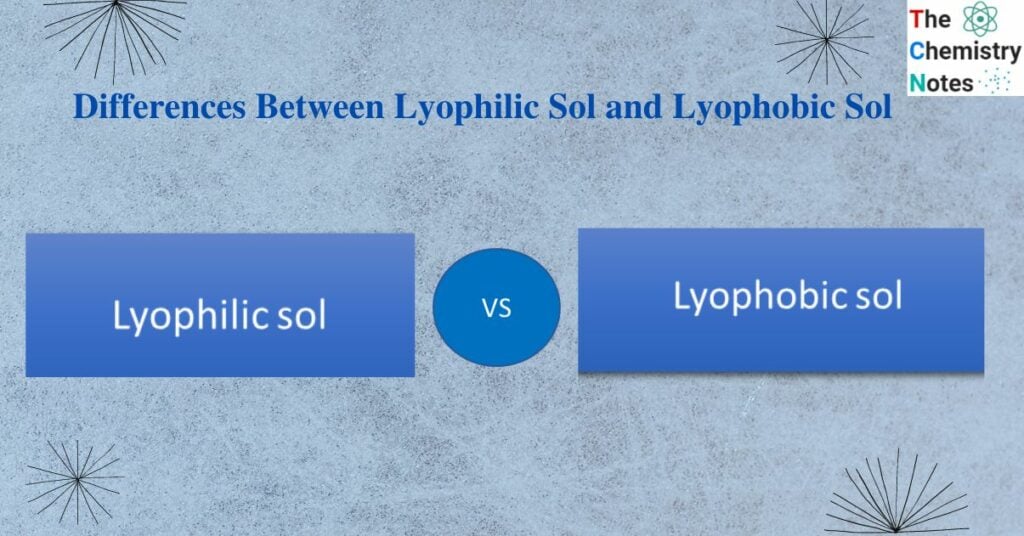
A colloid is a heterogenous mixture in which particle size ranges between 1 and 100 nm. The colloidal state consists of two phases: a dispersed phase and a dispersion phase.
Dispersed phase: The substance is distributed as colloidal particles.
Dispersed medium: The continuous phase in which the colloidal particles are dispersed.
Interesting Science Videos
Lyophilic sol
Lyophilic sols are those in which the dispersed phase exhibits a definite affinity for the dispersion medium or solvent. When lyophilic colloids are mixed with liquids, a strong attraction between the liquid and colloidal particles occurs, resulting in the formation of a stable solution.
Lyophobic sol
Lyophobic sols are those in which the dispersed phase has no attraction for the dispersion medium or solvent. When lyophobic colloids are mixed with liquid, the force of attraction between the liquid and the colloidal particles is very weak. Lyophobic sols are difficult to make and require specialized techniques. These sols are not stable and can be easily precipitated.
Differences between lyophilic and lyophobic sol
Based on the nature of the interaction between the dispersed phase and the dispersion medium, the colloidal solution is classified as lyophilic and lyophobic sol. These show various characteristic properties.
| S.N | Lyophilic sol | Lyophobic sol |
| 1. | Lyophilic colloids are also known as solvent or liquid-loving colloids. | Lyophobic colloids are known as solvent hating or liquid hating colloids. |
| 2. | There is a strong force of attraction between liquids and the colloids. | There is no or very little attraction between liquids and colloids. |
| 3. | It has a lower surface tension than medium. | The surface tension of lyophobic sol is the same as that of the medium. |
| 4. | The viscosity of lyophilic sol is much higher than that of the medium. | The viscosity of lyophobic sol is same as that of the medium. |
| 5. | These are thermodynamically more stable. | These are thermodynamically less stable. |
| 6. | Lyophilic sols show a weak Tyndall effect. | In lyophobic sols, Tyndall effect is well – defined. |
| 7. | The addition of a smaller amount of electrolyte has little effect. | With the addition of a small amount of electrolytes, coagulation takes place. |
| 8. | Colloidal particles are undetectable even under an ultramicroscope. | Particles can be detected under an ultramicroscope. |
| 9. | These are reversible in nature. | These are irreversible. |
| 10. | Examples: Proteins, gum, gelatins, starch, rubber etc. | Examples: Ferric Hydroxide, Aluminium hydroxide, Platinum, Arsenic etc., |
References
- Shaw D. J. (1992). Introduction to colloid and surface chemistry (4th ed.). Butterworth-Heinemann.
- https://ncert.nic.in/ncerts/l/lech105.pdf
- https://qsstudy.com/difference-lyophobic-colloid-lyophilic-colloid/
- https://nios.ac.in/media/documents/SrSec313NEW/313_Chemistry_Eng/313_Chemistry_Eng_Lesson8.pdf
- https://study.com/academy/lesson/classification-of-colloids-methods-examples.html
